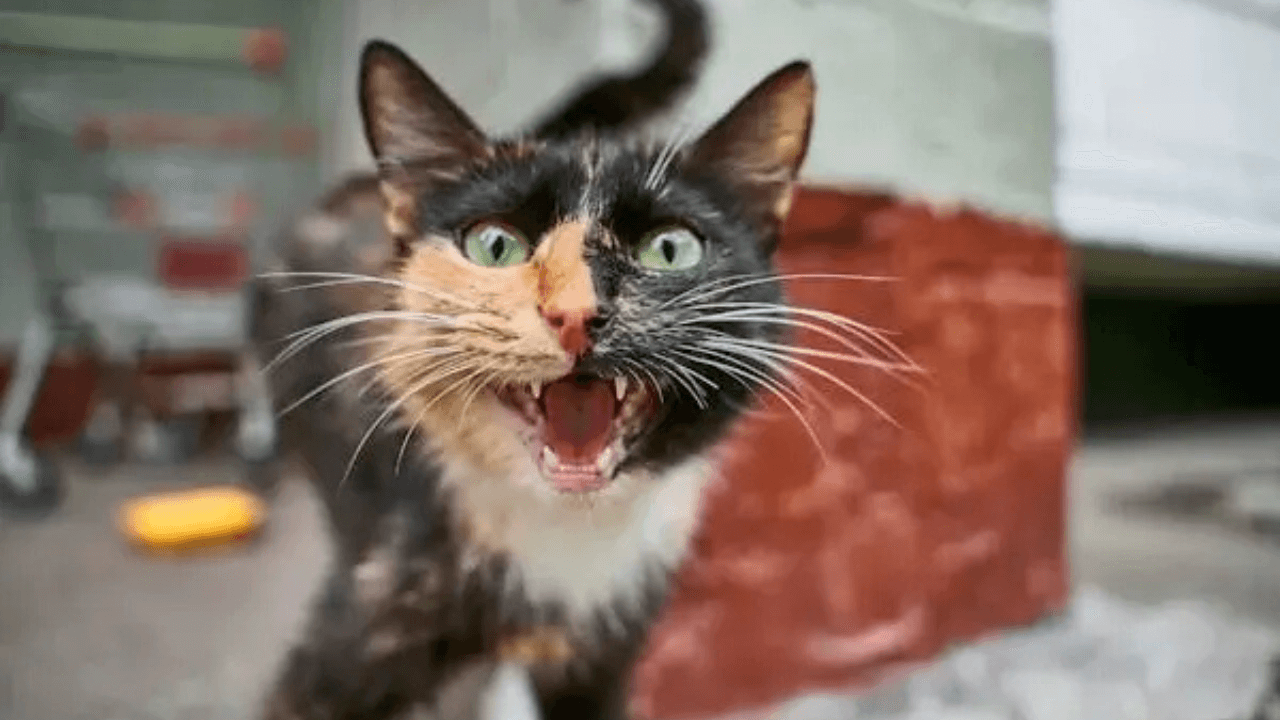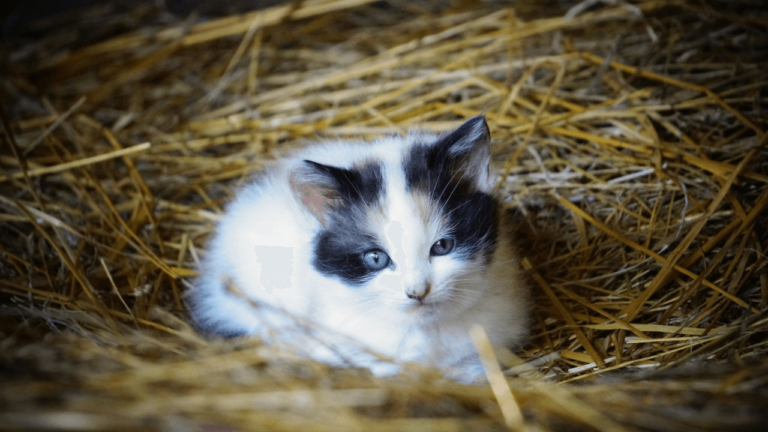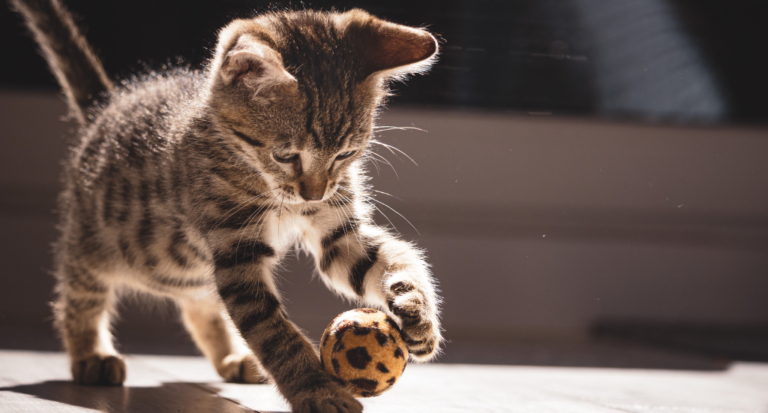How to Get Rid of Fleas on Outdoor Cats: Effective Tips and Natural Remedies
Fleas can be a frustrating problem for outdoor cats and their owners alike. These tiny pests not only cause discomfort but can lead to more severe health issues if not addressed quickly. Thankfully, there are effective ways to combat fleas, both naturally and with store-bought treatments. Let’s dive into the best ways to get rid of fleas on outdoor cats, prevent infestations, and keep your home and yard flea-free.
Understanding Fleas and Why They Target Outdoor Cats and How to Get Rid of Fleas on Outdoor Cats
Fleas are tiny insects that thrive in warm, humid environments and are attracted to animals with fur. Outdoor cats are especially vulnerable to fleas as they come into contact with other animals, flea-infested areas, or flea eggs while exploring. Fleas are resilient pests with a life cycle that allows them to reproduce rapidly; a single flea can lay up to 50 eggs a day!
Once fleas latch onto a host, they start feeding on the animal’s blood and lay eggs, which drop into the environment. This cycle makes outdoor cats susceptible to recurring infestations, which can be both uncomfortable and dangerous. Understanding the flea’s life cycle can help you combat them more effectively and break the cycle of infestation.
Signs of Fleas on Your Outdoor Cat
Spotting fleas on an outdoor cat can be challenging, especially if they have dense fur. However, there are some clear signs of a flea infestation:
- Constant Scratching: Fleas cause intense itching, which will make your cat scratch or bite at their skin.
- Excessive grooming: Cats with fleas may groom themselves more often in an attempt to remove the fleas.
- Hair loss and red patches: Flea bites can cause hair loss and visible red patches on the skin due to constant scratching.
- Flea Dirt: Look for small black specks (flea dirt) in your cat’s fur or bedding. This is flea waste and a sure sign of fleas.
These signs can help you determine if your cat has fleas so that you can start treatment as soon as possible.

How to Prevent an Outdoor Cat from Getting Fleas
Prevention is the best approach when it comes to fleas. Here’s how to keep fleas off your outdoor cat:
- Flea Collars: Flea collars are an effective preventive measure, as they release small amounts of insecticide that repel fleas.
- Spot-On Treatments: Apply topical flea preventatives that can help repel fleas. Ensure these are safe for cats and apply as directed.
- Clean Environment: Regularly wash your cat’s bedding and clean outdoor areas to reduce flea populations.
These steps can be especially effective when combined with natural preventive options, giving your cat extra protection in a flea-prone environment.
Natural Preventive Measures
If you’re looking to avoid chemicals, there are natural flea repellents you can try:
- Essential Oils: A few drops of cat-safe essential oils like lavender or cedarwood can repel fleas. However, use them sparingly, as cats are sensitive to strong scents.
- Plant-Based Deterrents: Plant flea-repellent herbs like mint and rosemary around areas where your cat frequents in the yard.
These natural options can work alongside other preventive measures, offering a multi-layered approach to flea prevention.
How to Get Rid of Fleas on Cats Without Bathing
Cats often dislike water, making it hard to bathe them. Thankfully, there are ways to remove fleas without subjecting your cat to a bath.
- Flea Combs: Use a fine-toothed flea comb to remove fleas and their eggs from your cat’s fur. This method is particularly effective on shorter-haired cats.
- Regular Brushing: Brushing removes fleas, flea dirt, and loose fur that fleas cling to. Brush daily if possible, focusing on areas like the neck and tail base.
These grooming habits are gentle alternatives to bathing and can significantly reduce the flea population on your cat.
How to Get Rid of Fleas on Cats Naturally
For a chemical-free approach, there are natural treatments that effectively combat fleas. Here are some of the best natural options:
- Apple Cider Vinegar Spray: Diluted apple cider vinegar acts as a natural flea repellent. Mix equal parts of water and apple cider vinegar, then spray on your cat’s fur, avoiding the face.
- Lemon Spray: Boil a sliced lemon in water, let it cool, and spray it on your cat’s fur. The citric acid repels fleas, making it an effective natural remedy.
These remedies help reduce the number of fleas without exposing your cat to potentially harmful chemicals.
Home Remedies for Fleas on Cats: Baking Soda
Baking soda is a popular home remedy for flea control. It dehydrates fleas and their eggs, reducing their lifespan. Here’s how to use it:
- Sprinkle baking soda on your cat’s fur and rub it in gently.
- Allow it to sit for a few minutes, then use a flea comb to remove the baking soda and any trapped fleas.
- You can also sprinkle baking soda on your cat’s bedding and vacuum it up after a few hours to reduce flea eggs.
Baking soda is non-toxic, making it a safe and natural choice for flea control on outdoor cats.
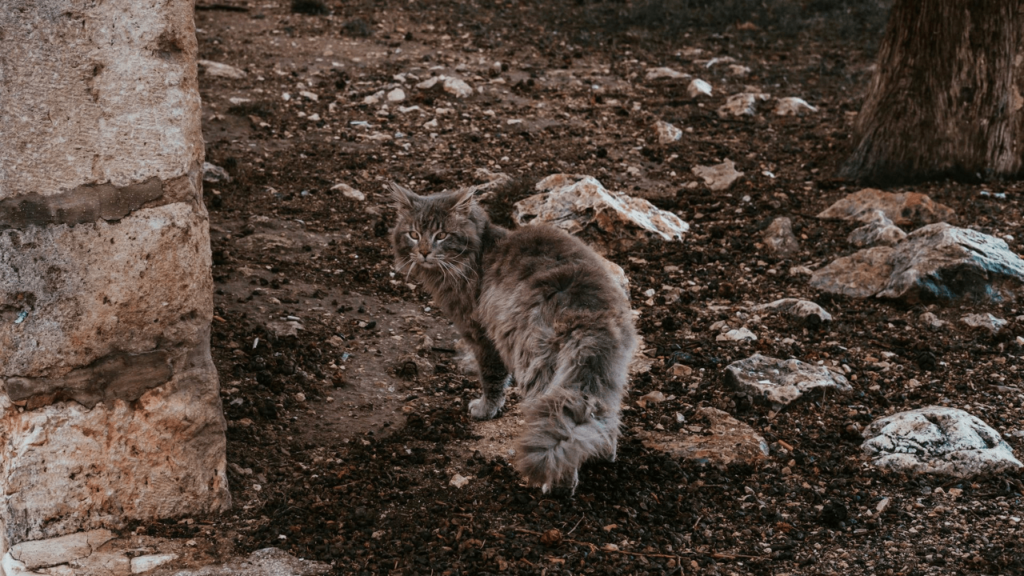
how to tell if a cat is angry or playing
How to Get Rid of Fleas on Cats Fast
When you need to get rid of fleas quickly, there are a few fast-acting options:
- Spot Treatments: Over-the-counter flea spot treatments are often effective within hours. Be sure to choose one specifically for cats and apply it to the neck where your cat can’t lick it.
- Manual Removal: For an immediate solution, use a flea comb to physically remove fleas from your cat’s fur.
These methods help reduce flea numbers fast, making your cat more comfortable in a short time.
Best Flea Treatment for Outdoor Cats
When choosing a flea treatment for outdoor cats, it’s important to consider the environment and flea exposure. Popular options include:
- Topical Treatments: These are easy to apply and long-lasting, protecting your cat for weeks.
- Oral Flea Control: Flea control pills are another effective option and can kill fleas within hours.
Choosing the best treatment depends on your cat’s exposure to fleas and any potential sensitivities they may have.
Do Outdoor Cats Have Fleas in the Winter?
Many people assume that fleas disappear during winter, but unfortunately, these pests can survive even in colder months. While outdoor flea activity does reduce significantly in winter due to cold temperatures, they can still find ways to persist, especially if they manage to make it indoors where it’s warm. Flea eggs and larvae can survive in temperatures as low as 55°F if they’re sheltered, so even outdoor cats can encounter them during winter.
Protecting Outdoor Cats in Winter
- Year-Round Preventive Measures: Continue using flea treatments throughout the winter months to ensure protection.
- Indoor Resting Areas: If possible, provide a warm indoor spot for your outdoor cat, reducing the chance of flea exposure.
- Check for Fleas Regularly: Even if the risk is lower, regular inspections can prevent a surprise infestation come spring.
By maintaining flea control all year, you’re protecting your outdoor cat and keeping fleas from hitching a ride back into your home.
How to Get Rid of Cat Fleas in the House
Once fleas are on your outdoor cat, they can easily be brought inside and start infesting your home. If you’ve noticed fleas in your living spaces, it’s crucial to act quickly.
- Vacuuming: vacuum carpets, rugs, and furniture regularly to remove fleas and their eggs. Empty the vacuum outside immediately to avoid re-infestation.
- Wash Bedding: Wash all cat bedding, and if your cat sleeps in any area around the home, wash those fabrics too in hot water.
- Diatomaceous Earth: This natural powder is effective in drying out and killing fleas. Sprinkle it on carpets, wait for a few hours, and vacuum thoroughly.
Clearing your home of fleas can take time, but consistency will help. Treating your home is essential to break the flea life cycle and prevent your cat from becoming reinfested.
Keeping Your Yard Flea-Free
Maintaining a flea-free yard is key to keeping fleas off your outdoor cat. By managing the outdoor environment, you can greatly reduce the risk of infestation.
- Yard Maintenance: Fleas thrive in damp, shaded areas. Regularly mowing the grass, raking leaves, and trimming shrubs reduce potential flea-hiding spots.
- Natural Flea Repellents: Planting flea-repellent plants like mint, lavender, and rosemary in your yard can discourage fleas from taking up residence.
- Nematodes: Beneficial nematodes, available at garden centers, are tiny organisms that naturally feed on flea larvae in the soil. They’re safe for pets and humans and can be an effective outdoor flea control solution.
With these yard maintenance practices, you create a less hospitable environment for fleas, helping to protect your outdoor cat from infestation.
Flea Control Maintenance for Outdoor Cats
Ongoing maintenance is essential to keep fleas at bay, especially for cats that regularly venture outside. Flea control isn’t a one-time effort but a consistent practice.
- Monthly Treatments: Applying monthly flea treatments helps prevent new infestations and keeps your cat safe.
- Regular Checks: Inspect your cat’s fur for fleas and flea dirt every few days to catch any signs of reinfestation early.
- Grooming Routine: Brushing and using a flea comb can catch any fleas or eggs before they become a problem.
By sticking to a flea control routine, you’ll provide your outdoor cat with continuous protection against fleas and other pests.
When to See a Vet for Flea Control
If home remedies and over-the-counter treatments aren’t enough, it may be time to seek veterinary assistance. Severe flea infestations can lead to issues like anemia, tapeworms, and flea allergy dermatitis, which may require medical treatment.
- Signs of Severe Infestation: Excessive scratching, hair loss, lethargy, and pale gums can indicate a more serious flea issue that requires a vet’s attention.
- Prescription Treatments: Veterinarians can offer stronger, prescription-grade flea treatments and provide advice tailored to your cat’s health.
Your vet can also help rule out any underlying health conditions and ensure your cat receives safe and effective treatment for fleas.
Additional Tips for Comprehensive Flea Control for Outdoor Cats
Flea control can seem overwhelming, especially when dealing with outdoor cats that have consistent exposure to the outside world. Here are a few additional strategies to ensure your flea control approach is thorough and effective.
Use Flea Traps to Monitor Flea Activity
- Sticky Flea Traps: Place sticky flea traps around your home, especially near entryways or places your cat frequently visits, to monitor flea activity.
- Homemade Light and Soap Traps: Fleas are attracted to light, so you can create a simple flea trap with a shallow dish of soapy water under a nightlight. Fleas will jump toward the light and get trapped in the water.
By using traps, you can gauge the extent of flea activity in your home and adjust your treatment strategies accordingly.
Treating All Pets in the Household
If you have more than one pet, it’s essential to treat them all for fleas at the same time. Fleas can jump between animals, meaning untreated pets can become carriers and re-infest your outdoor cat. Coordinating flea treatments for all pets ensures that fleas don’t have a place to hide and that your home remains flea-free.
Seasonal Deep Cleaning for Flea Prevention
In addition to regular cleaning, doing a deep clean each season, especially during spring and summer, can significantly reduce the flea population. Focus on areas like:
- Soft furnishings: Wash cushion covers, blankets, and bedding in hot water.
- Pet Accessories: Clean collars, harnesses, and outdoor toys that your cat uses.
- Under Furniture: Vacuum under couches and beds where fleas may hide.
A seasonal deep clean not only helps remove any flea eggs and larvae but also keeps your living space hygienic and comfortable for your pets.
Encourage Predatory Insects in the Yard
While it may sound counterintuitive, certain predatory insects like spiders and ants can help control the flea population naturally. Avoid using broad-spectrum pesticides in your yard, as these kill off beneficial predators that naturally keep fleas and other pests under control.
Maintain an Outdoor Resting Area for Your Cat
Providing an outdoor bed or designated resting area for your cat can help control fleas. Use bedding material that’s easy to wash or replace, and consider adding flea-repelling herbs around this area, like rosemary or lavender. By having a designated outdoor space for your cat, you reduce the likelihood of fleas spreading throughout the yard and help limit their potential exposure.
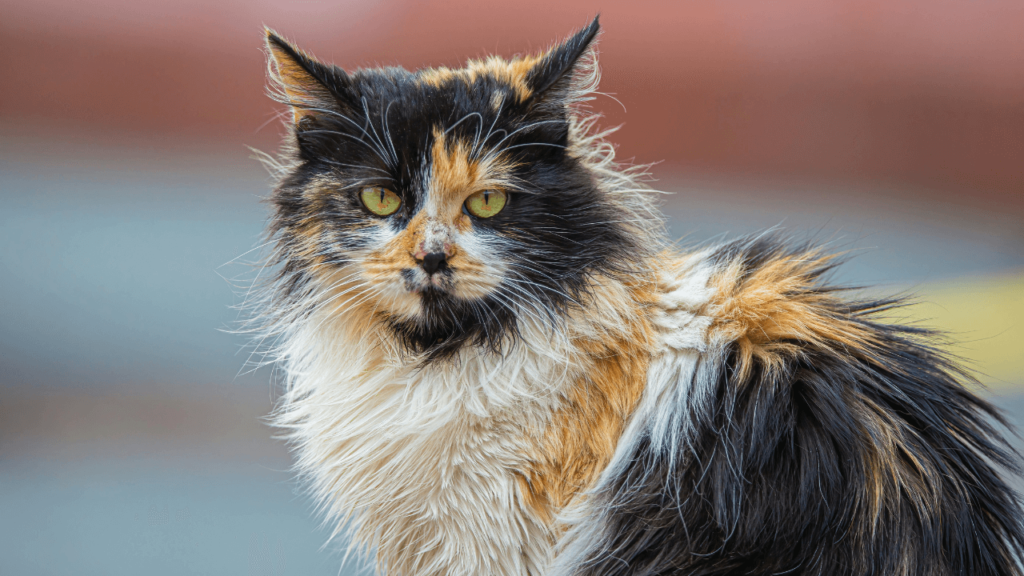
Choosing the Right Flea Prevention Products for Your Outdoor Cat
Selecting the most effective flea prevention products for outdoor cats requires a bit of research to ensure safety, effectiveness, and convenience. Here are the primary types of products available and how they can benefit your outdoor cat:
Spot-On Treatments
- Topical Spot-Ons: These treatments, applied monthly, offer continuous protection by killing fleas on contact. Most spot-ons kill fleas in various stages of their lifecycle, including eggs and larvae, which helps reduce the chances of re-infestation.
- Proper Application: Apply spot-on treatments between your cat’s shoulder blades, ensuring they can’t lick the product. It’s a quick and easy method that doesn’t interfere with your cat’s outdoor lifestyle.
Oral Flea Medications
- Fast-Acting Oral Treatments: Oral flea treatments work by introducing flea-killing ingredients into your cat’s bloodstream. Fleas are killed quickly after biting your cat, usually within hours.
- Long-Lasting Options: Some oral medications provide protection for up to 30 days, making them a convenient choice for busy cat owners.
- Consult Your Vet: It’s always a good idea to consult your vet before starting any oral flea medication, as they’ll know the best options for your cat’s age, weight, and health.
Flea Collars
- Extended Protection: Flea collars are effective for extended periods, often lasting several months. They release small amounts of insecticide that repel fleas.
- Choosing a Cat-Safe Collar: Not all flea collars are created equal; some contain chemicals that may not be suitable for cats, especially outdoor cats who may come into contact with other animals or get the collar caught on branches. Look for collars specifically designed for cats and those with a safety release feature.
Each product type has its benefits, and combining a few products, like a flea collar with a spot-on treatment, can provide your outdoor cat with additional layers of protection.
Flea Control in Multi-Cat Households
If you have more than one cat, flea control becomes even more critical as fleas can quickly jump from one pet to another. Here’s how to manage fleas in a multi-cat household:
- Synchronized Treatments: Treat all cats at the same time to avoid fleas spreading between them. Be mindful to use cat-safe products and avoid treatments designed for dogs, which can be toxic to cats.
- Shared Spaces: Clean and treat shared areas like cat trees, beds, or scratching posts where fleas and flea eggs may hide.
- Isolation for New Cats: If you bring a new cat into your household, isolate and treat them for fleas before allowing them to mix with other cats. This can prevent introducing fleas to a flea-free household.
Managing fleas in a household with multiple cats requires consistent efforts, but it’s essential to prevent re-infestation and keep all your pets comfortable and healthy.
Why Flea Prevention Is a Year-Round Commitment
Even though flea populations generally peak in warmer months, flea prevention should be a year-round practice for outdoor cats. Here’s why:
- Winter Survival: Fleas can survive indoors during the winter by hiding in carpets, bedding, and soft furnishings. Outdoor cats who come indoors during winter months may inadvertently introduce fleas to your home.
- Egg Dormancy: Flea eggs can go dormant for weeks and hatch when conditions are favorable, meaning that a seemingly flea-free winter can lead to an unexpected spring infestation.
- Reduced Flea Activity: Prevention treatments are often more effective when maintained consistently. Skipping treatments during the winter can allow fleas to get a foothold, making springtime infestations harder to control.
A consistent, year-round flea prevention approach not only protects your outdoor cat from uncomfortable bites and itching but also helps reduce flea populations in your home and yard.
The Role of Nutrition in Flea Prevention
A healthy diet can help bolster your cat’s natural defenses against pests like fleas. Certain nutrients and supplements can improve your cat’s skin and coat health, making them less attractive to fleas.
- Omega-3 Fatty Acids: Omega-3s, often found in fish oil, help maintain healthy skin and reduce inflammation caused by flea bites.
- Brewer’s Yeast: Some cat owners find that adding brewer’s yeast to their cat’s diet can act as a natural flea deterrent. It contains B vitamins that can improve coat health and make your cat less appealing to fleas.
- Quality Protein: Ensuring your cat has a protein-rich diet helps improve coat condition, which may discourage fleas from making a home there.
Before adding any supplements to your cat’s diet, consult your vet to ensure they’re safe and appropriate for your pet’s health and lifestyle.
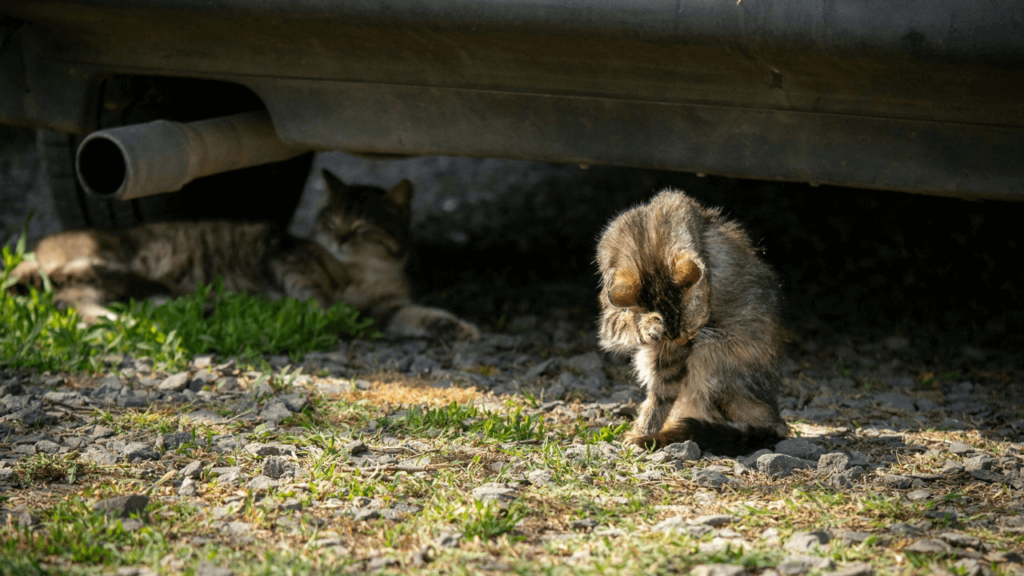
Understanding the Flea Life Cycle for Better Control
Knowing the flea life cycle can improve your control methods, as fleas in different life stages require different treatments.
- Egg Stage: Flea eggs are laid on your cat but fall off into the environment. Regular cleaning, especially vacuuming, helps remove these eggs.
- Larvae Stage: Flea larvae develop in dark, humid areas, often hiding in carpets, under furniture, or in pet bedding. Keeping these areas clean and using flea powders or diatomaceous earth can help.
- Pupa Stage: Flea pupae form a protective cocoon, which can be hard to penetrate with traditional treatments. This stage can lie dormant for months until vibrations, warmth, or carbon dioxide signal them to hatch.
- Adult Stage: Adult fleas feed on your cat’s blood, reproduce, and lay eggs. This is the stage targeted by most flea treatments.
By understanding this cycle, you can tailor your flea control strategy to target each stage and prevent the development of future generations.
Final Flea Checkup: Making Sure Fleas Are Gone for Good
Once you’ve implemented flea control measures, conduct a final checkup to ensure that fleas are fully eliminated.
- Inspect Your Cat’s Fur: Look for signs of flea dirt, live fleas, or bites. If you see any, continue treatment as needed.
- Monitor Flea Traps and Clean Bedding: If you’re still finding fleas in traps or on bedding, reapply treatments and thoroughly clean areas where fleas could be hiding.
- Prevent Future Infestations: Keep up with preventive measures to avoid future flea problems, as skipping just a month of flea control can lead to a re-infestation.
Consistency is key to keeping fleas gone for good and ensuring your outdoor cat stays comfortable, healthy, and flea-free.
Conclusion
Dealing with fleas on outdoor cats can be challenging, but with a combination of preventive measures, natural remedies, and effective treatments, you can protect your cat and keep fleas at bay. Regular maintenance is key, as fleas can easily return if preventive steps are not followed consistently. By creating a flea-free environment both indoors and outdoors and monitoring your cat for any signs of fleas, you’re ensuring a more comfortable and healthier life for your feline friend.
FAQs
What are some signs that my outdoor cat has fleas?
Look for symptoms such as constant scratching, excessive grooming, and visible flea dirt in the fur. Your cat may also exhibit hair loss and red patches on the skin.
How often should I check my outdoor cat for fleas?
It’s best to check your cat for fleas at least once a week, especially during warmer months when flea activity is high. Regular checks allow you to catch and treat fleas early.
Can indoor cats get fleas from outdoor cats?
Yes, if an outdoor cat brings fleas indoors, these pests can easily jump onto indoor cats. This is why treating your outdoor cat for fleas is essential, even if you have indoor cats at home.
Are flea collars safe for outdoor cats?
Many flea collars are safe for outdoor cats and can offer months of protection. However, choose a collar designed specifically for cats and follow the manufacturer’s instructions.
Do fleas go away on their own in winter?
Flea activity decreases in winter, but fleas can survive indoors or in protected areas. It’s important to maintain preventive treatments for your cat year-round to avoid winter infestations.
